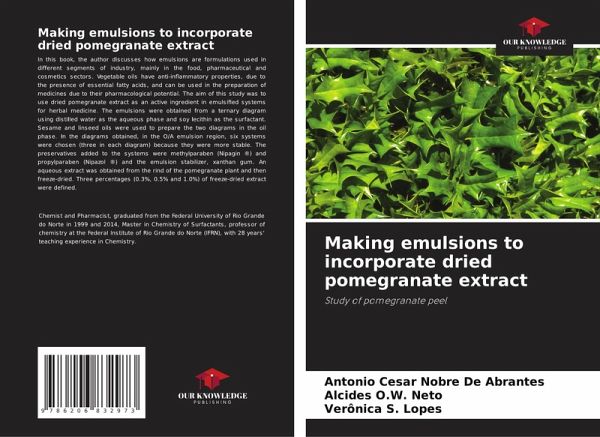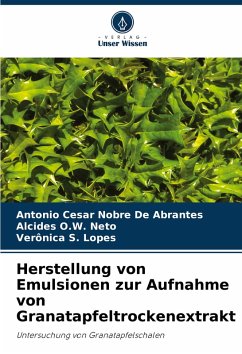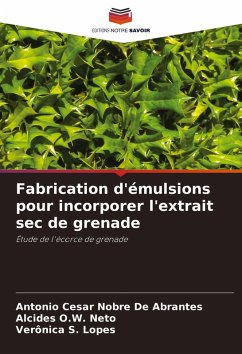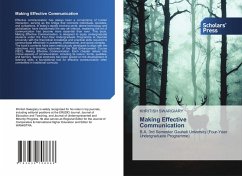
Making emulsions to incorporate dried pomegranate extract
Study of pomegranate peel
Versandkostenfrei!
Versandfertig in 6-10 Tagen
33,99 €
inkl. MwSt.

PAYBACK Punkte
17 °P sammeln!
In this book, the author discusses how emulsions are formulations used in different segments of industry, mainly in the food, pharmaceutical and cosmetics sectors. Vegetable oils have anti-inflammatory properties, due to the presence of essential fatty acids, and can be used in the preparation of medicines due to their pharmacological potential. The aim of this study was to use dried pomegranate extract as an active ingredient in emulsified systems for herbal medicine. The emulsions were obtained from a ternary diagram using distilled water as the aqueous phase and soy lecithin as the surfacta...
In this book, the author discusses how emulsions are formulations used in different segments of industry, mainly in the food, pharmaceutical and cosmetics sectors. Vegetable oils have anti-inflammatory properties, due to the presence of essential fatty acids, and can be used in the preparation of medicines due to their pharmacological potential. The aim of this study was to use dried pomegranate extract as an active ingredient in emulsified systems for herbal medicine. The emulsions were obtained from a ternary diagram using distilled water as the aqueous phase and soy lecithin as the surfactant. Sesame and linseed oils were used to prepare the two diagrams in the oil phase. In the diagrams obtained, in the O/A emulsion region, six systems were chosen (three in each diagram) because they were more stable. The preservatives added to the systems were methylparaben (Nipagin ®) and propylparaben (Nipazol ®) and the emulsion stabilizer, xanthan gum. An aqueous extract was obtained from the rind of the pomegranate plant and then freeze-dried. Three percentages (0.3%, 0.5% and 1.0%) of freeze-dried extract were defined.












